 |
 |
 |
| |
CDC Reports: Disparities in Health in HIV: "BLACKS TENDED TO HAVE WORSE CONTINUUM OF CARE COMPARED TO WHITES"
|
| |
| |
Reported by Jules Levin
IAC Wash DC 2012 July 22-27
- 1,148,200 estimated to be living with HIV in USA: prevalence 2009
- 207,600 undiagnosed (18.1%)
- 45% black, 33% white, 19% latino
- 14% 55-64 yrs of age, 33% 45-54%, 3% over 65 yrs of age
- 52% males with reported infection by male-male contact, 18% females heterosexual contact
- 82% diagnosed, 66% linked-to-care, 37% retained in care, 33% prescribed ART,
25% viral suppression (all percentages here are of the total living with HIV)
BLACKS TENDED TO HAVE WORSE CONTINUUM OF CARE COMPARED TO WHITES:
- Diagnosed: 81% blacks, 80% latino, 85% whites
- Linked To Care: 62% blacks, 67% latino, 71% white
- Retained in care: 29% black, 33% latino, 35% white
- Viral Suppression: 21% blacks, 26% latino, 30% whites
A higher percentage of IDUs(male, female) & MSM IDUs were diagnosed & linked to care compared with heterosexuals & MSM but there were disparities in retention in care with females tending to do better than males. Males with IDU or heterosexual background tended to achieve less viral suppression. - see slide attached.
Younger persons <34 tended to have worse outcomes in these categories.
Younger person <34 in care tend to be less likely to be prescribed ART & also less likely to be virally suppressed.
AUTHOR SUMMARY:
Overall 857,276 or 75% of persons did not have a suppressed viral load, including 79% of blacks, 74% of latinos, and 70% of blacks. The percentages were lower in each stage of the continuum for blacks compared to whites. Increasing the number of young persons diagnosed & in critical care is critical to address HIV in the USA. Improvements are needed at each stage of the process (retention in care, receive ART, viral suppression) including expanding HIV testing to identify the more than 200,000 living with HIV in the USA who do not know they are infected. Insuring that persons stay in care & on treatment will increase the proportion of individuals who achieve & maintain viral suppression which will improve their health & to realize the full potential of prevention through treatment.
Webcast
Continuum of HIV care: differences in care and treatment by sex and race/ethnicity in the United States
Presented by H Irene Hall (United States).
H.I. Hall1, E.L. Frazier1, P. Rhodes1, D.R. Holtgrave2, C. Furlow-Parmley1, T. Tang3, K.M. Gray1, S.M. Cohen1, J. Skarbinski1
1Centers for Disease Control and Prevention, Atlanta, United States, 2Johns Hopkins Bloomberg School of Public Health, Baltimore, United States, 3ICF International, Atlanta, United States
Background: Early diagnosis of HIV, prompt linkage and sustained care, and antiretroviral therapy are associated with reduced individual morbidity and mortality and onward transmission of the virus. However, optimal levels of these indicators may not be achieved by all population groups with HIV.
Methods: Using data from CDC's National HIV Surveillance System, we determined the number of persons living with HIV aware and unaware of their infection using back-calculation models, and the percentage of persons linked to care within three months of diagnosis based on CD4 and viral load tests.
We estimated the percentages of persons retained in care, prescribed antiretroviral therapy, and with viral suppression using data from the Medical Monitoring Project, a surveillance system of persons in HIV care in select areas representative of all such persons in the United States. Using these data, we determined the continuum of care indicators for persons with HIV by sex and race/ethnicity.
Results: Of the estimated 1,148,200 persons living with HIV in 2009 in the United States, 869,000 (76%) were male, 510,600 (44%) black or African American, and 220,400 (19%) Hispanic or Latino.
The percentages of females diagnosed, linked to care, retained in care, and prescribed ART were slightly higher than for males but there were no substantial differences in viral suppression.
The percentages were lower in each stage of the continuum for blacks/African Americans and Hispanics/Latinos compared with whites.
Overall, 857,276 persons with HIV were not virally suppressed, including 75% of males, 79% of blacks/ African Americans, 74% of Hispanics/Latinos, and 70% of whites. Numbers were too small to present for other races.
Conclusions: Disparities exist in each step of the continuum for blacks/African Americans and Hispanics/Latinos. Additional efforts are needed to ensure that all persons with HIV get optimal care, reduce disparities, and ultimately reduce HIV transmission.


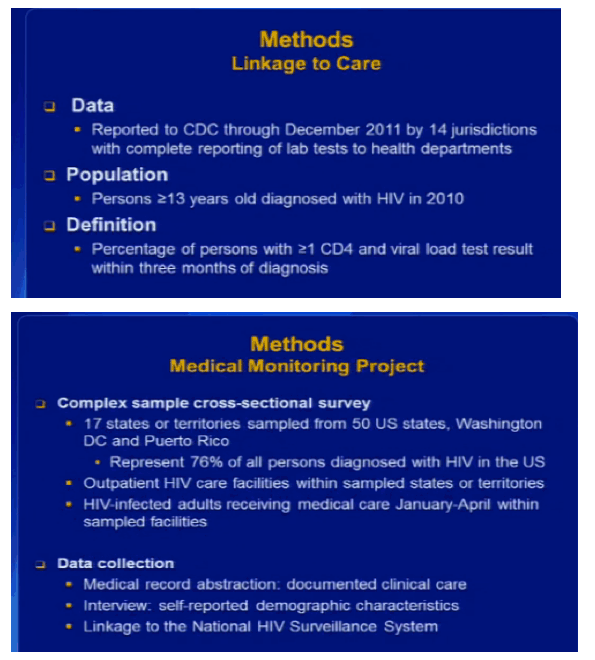
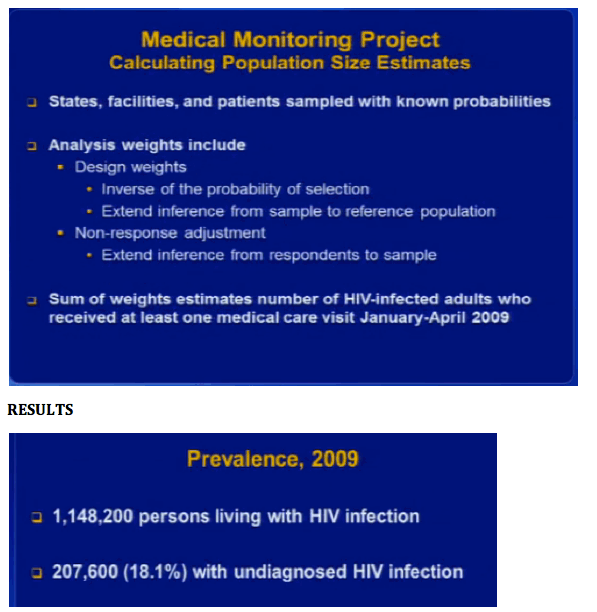
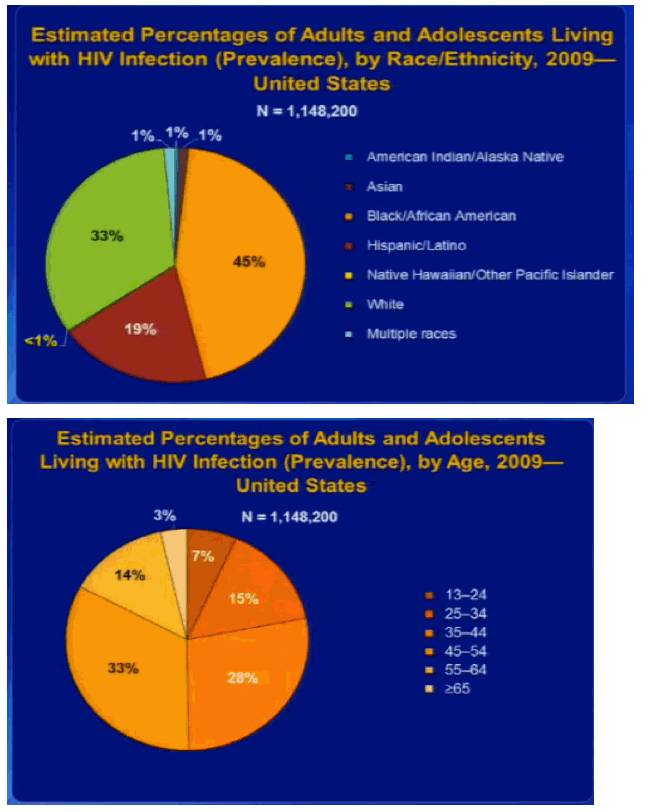
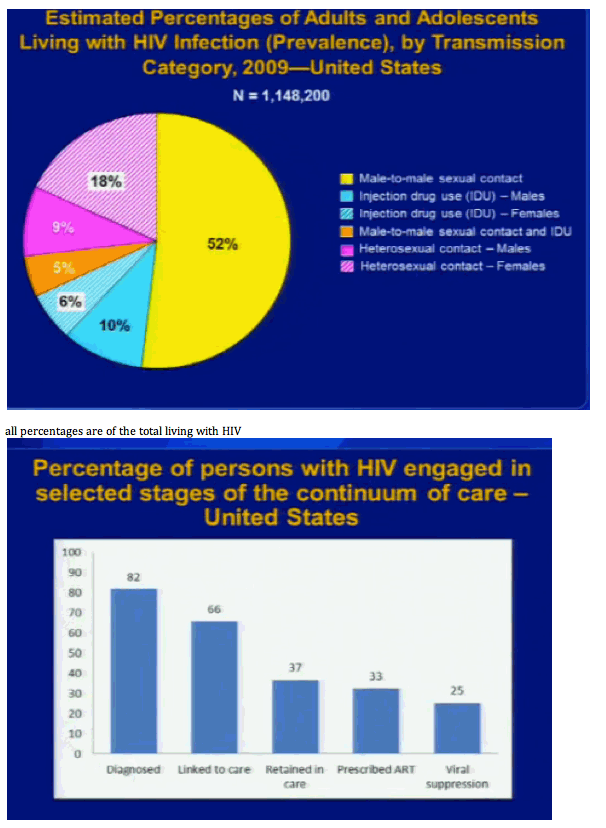
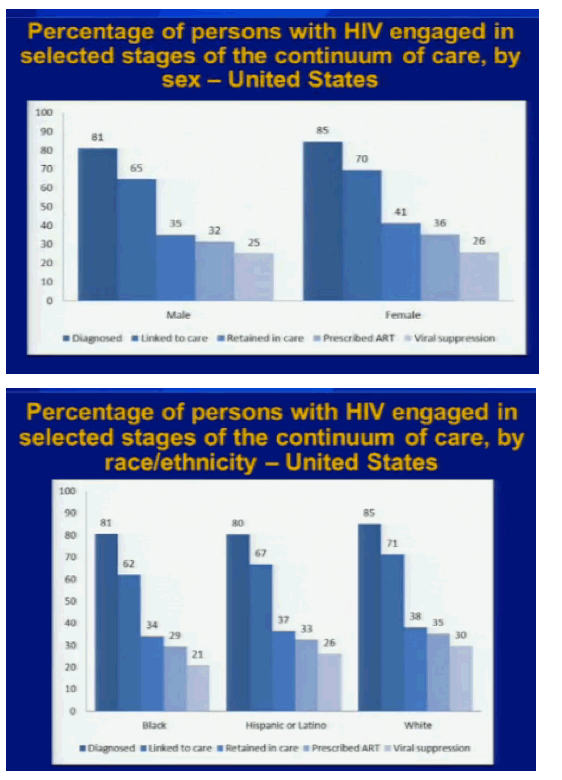
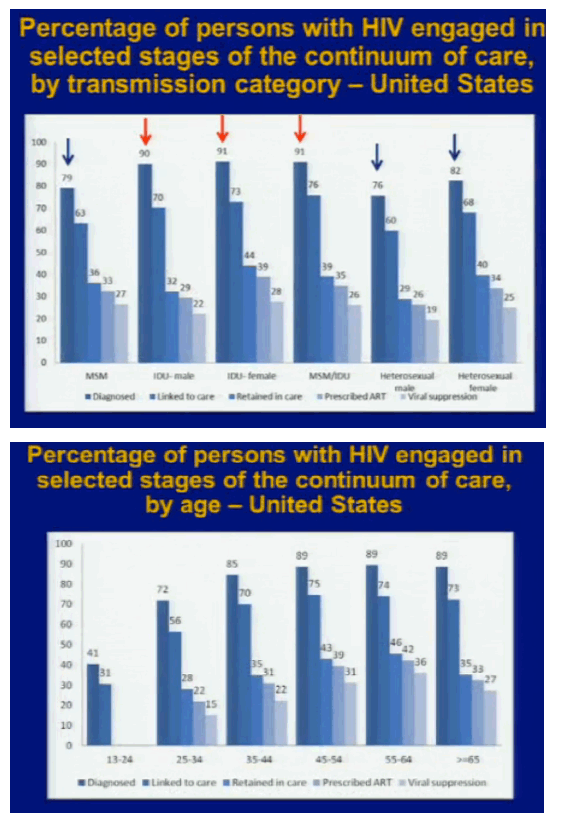
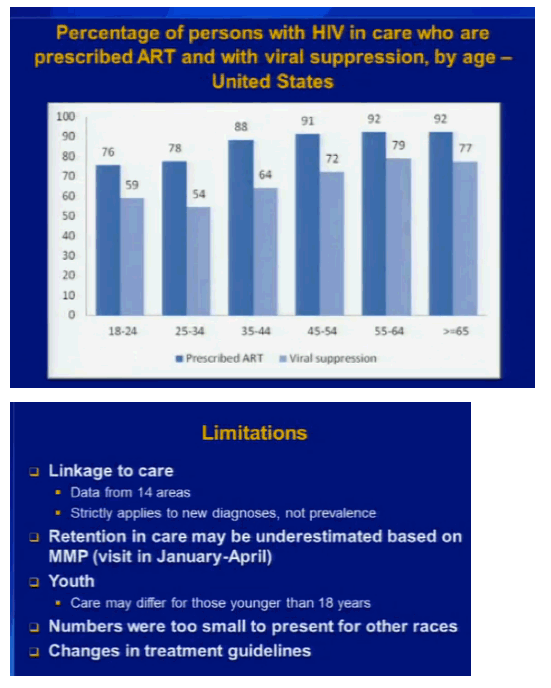
|
| |
|
 |
 |
|
|